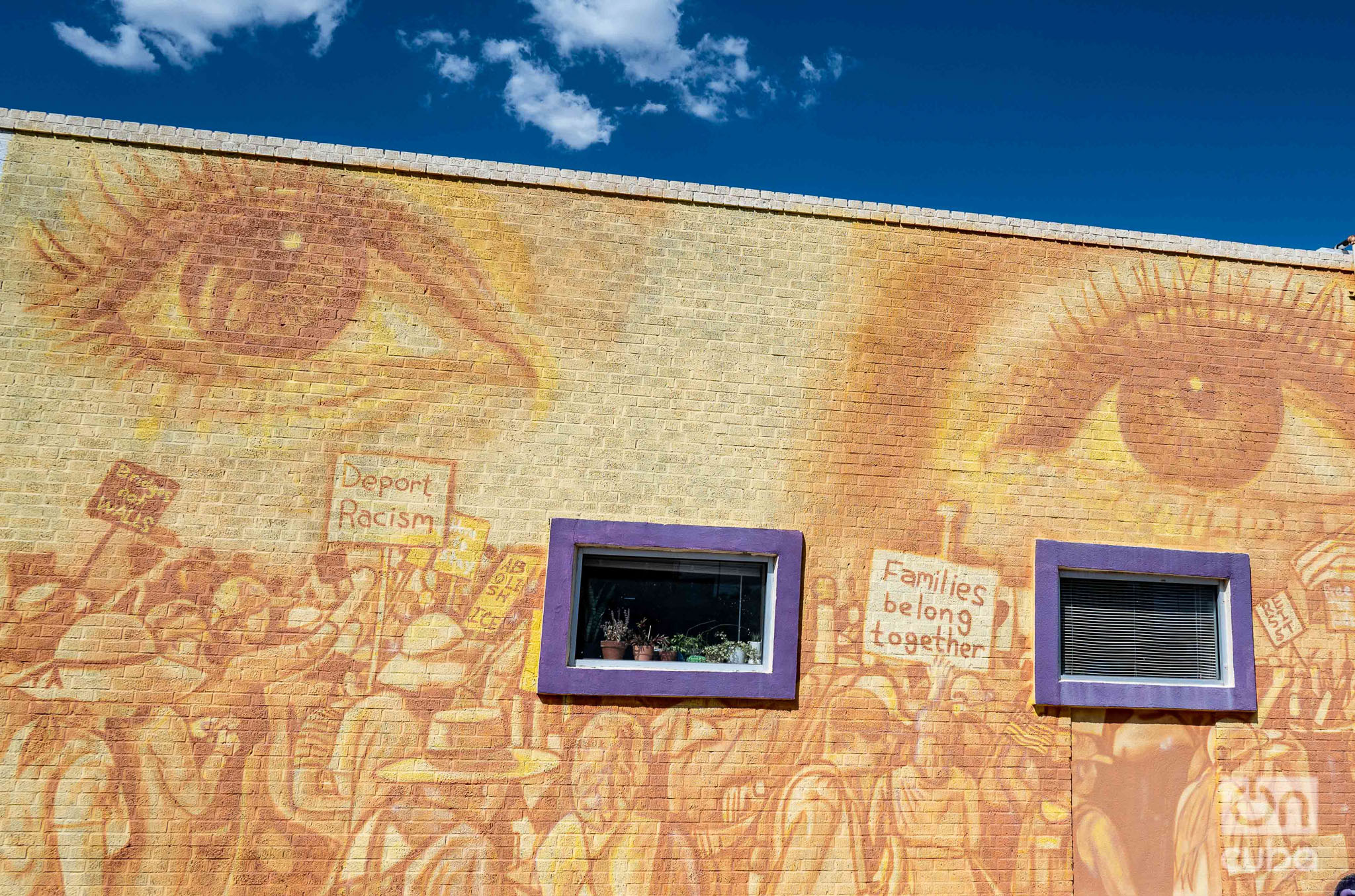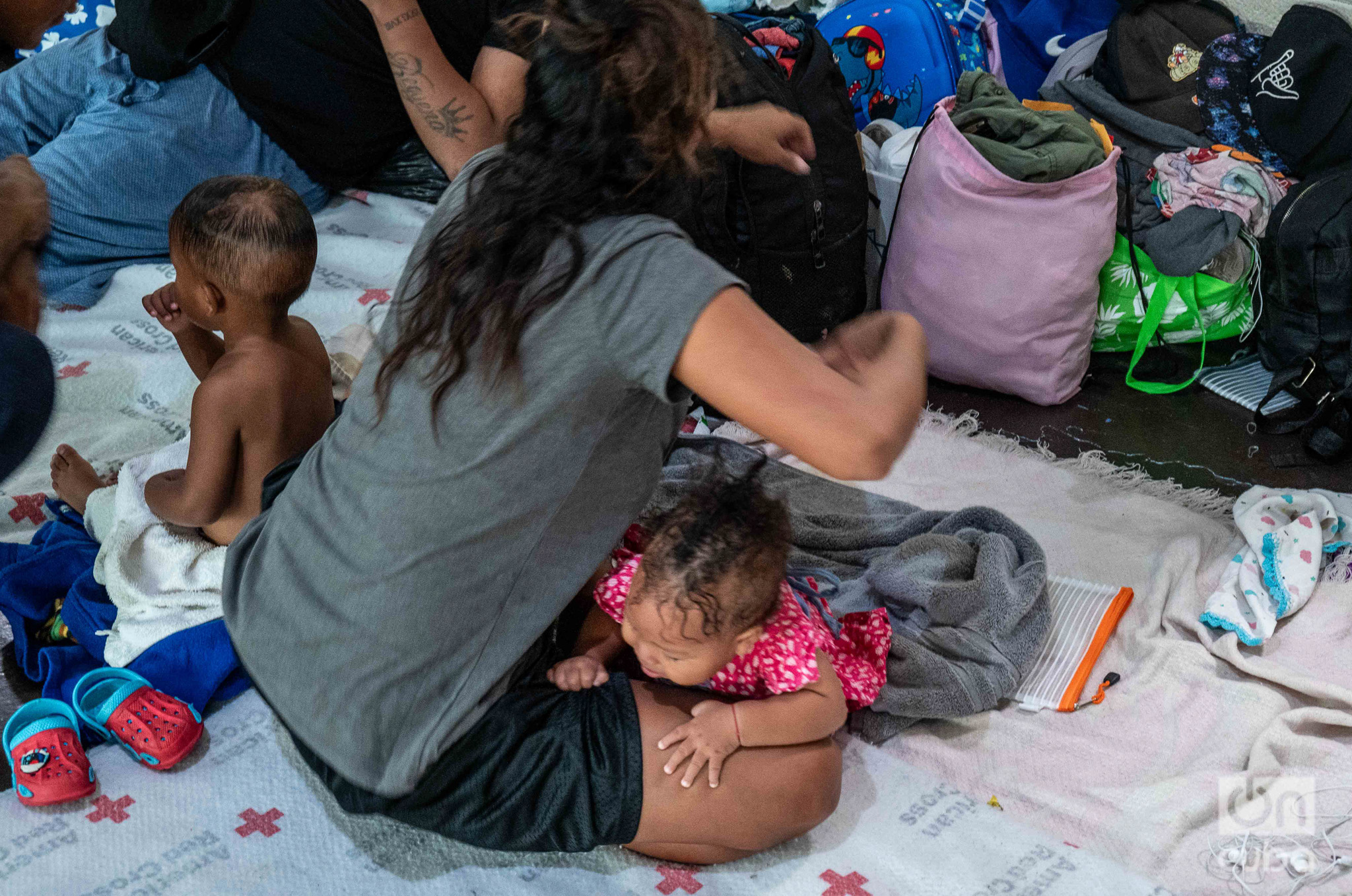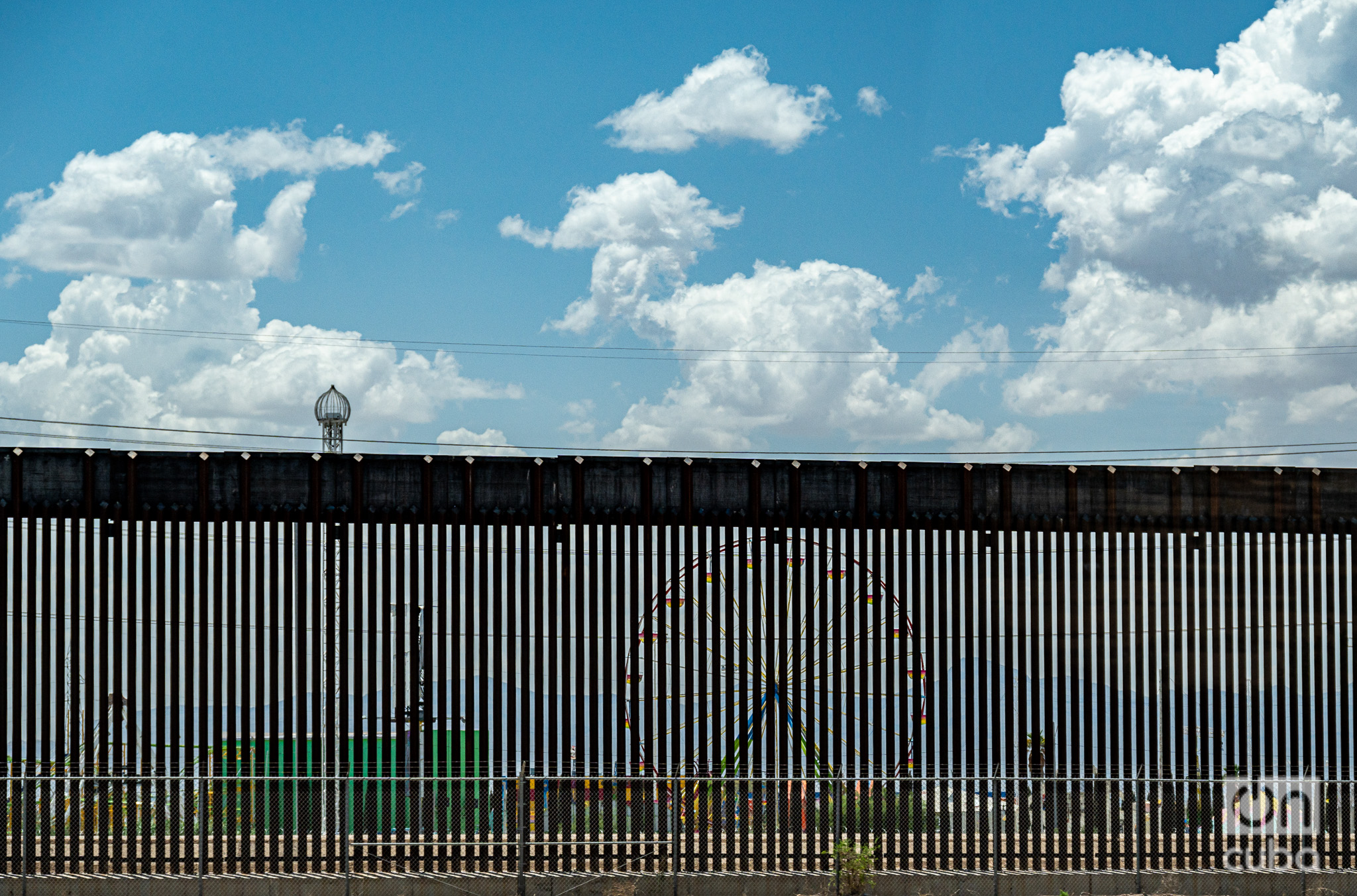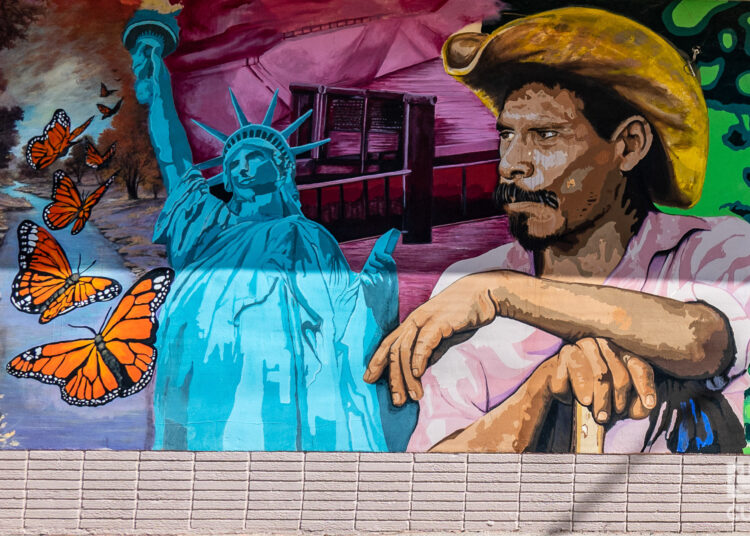“We did not cross the border, the border crossed us,” says Dylan Corbett, executive director of the Hope Border Institute, a religious organization dedicated to promoting the development of communities on the border between Mexico and the United States.
His phrase is common in the area; a reflection of how political borders are drawn piecemeal from the cultural, social, and even biological reality of the territories. The line delimited by such an imposing physical barrier has for decades deeply impacted life in these communities, on both sides.
Corbett welcomed at his headquarters journalists from various media and countries who traveled along the border. The meeting was in El Paso, Texas, the border city separated from Ciudad Juárez by a bridge, a river, and the inexorable metal fence. Here, what is Latin American flows with such force and naturalness that it is difficult to believe that one is stepping on U.S. soil.

El Paso, the right name
We are in a room whose walls are decorated only with an image of Our Lady of Guadalupe, revered as the “Queen of Mexico” and the “Empress of America.” Around the image, the walls are adorned with children’s drawings by children who have passed through this temporary shelter for migrants.
Corbett is sitting nearby. Wearing a blue shirt and tie jeans, and Texan boots, he speaks his fluent Spanish in pauses. He is quite the educator. After welcoming us and explaining how for more than ten years the institution he leads has proposed and implemented solutions based on human dignity and the common good while promoting contact between communities on both sides, he forcefully begins his presentation: “People have been migrating in this region for centuries. El Paso has its name based on the migration experience.”

In addition to his work at HOPE, Corbett coordinates the Vatican’s Migrants and Refugees Section in Mexico, Central America, and the Caribbean. His experience allows him to expand on historical key, the best way to understand the phenomenon.
El Paso was founded on the Camino Real — Corbett emphasized —, an important route that connected New Mexico with Mexico City more than a century ago. “That is how it acquired its identity, deeply linked to trade and migration,” he explained.

The expert explained that, with the independence of Mexico in 1821, El Paso became part of the new country. However, a few years later the Republic of Texas separated from Mexico (which recognized Texan independence in 1836) and, in 1945, the territory was annexed to the United States. This process of change and transformation in its governance reflects “the complex historical interactions that have shaped the identity of El Paso.”

“This place of convergence has several central themes: the Indigenous, the Spanish, the Texan, and finally, the American. We are at a meeting point between these historical, cultural, political, and economic central themes,” he explains while stating: “There have always been waves of migration. They have never stopped.”
Today, Corbett emphasizes, “we have thousands of agents, advanced technology, drones, and all the infrastructure; but we have learned that, despite all that, migrants continue to arrive. Despite the death and separation of families, people continue to cross. We are not going to stop migration.”
To welcome or reject

Dylan Corbett’s explanation shows that border dynamics affect both sides and underlines the urgency of comprehensive and humanitarian approaches. Meanwhile, the drama of those who cross is constantly marred by the manipulation of the issue for political purposes and the absence of effective measures to address the real needs of these communities.
“The United States doesn’t really have a strategy for [managing] immigration; only positions of welcoming or rejecting migrants, but not a coherent strategy,” Corbett asserts. In this vacuum, “the only strategy that exists is a strategy of pain,” he explains, referring to policies such as family separation, detention and deportations to other points on the border or third countries.

“Although immigration policies generate immediate effects, in the long term they do not manage to significantly alter the flows. Efforts to militarize the border and criminalize migrants have not been effective; people continue to arrive, although in smaller numbers,” he concludes.

The issue has been central to the political debate in the United States, a recurring question in the discourse of those aspiring to power. In every election cycle, border control and immigration policies are used as a campaign tool, always reflecting deep divisions and tensions.
“The right has politicized the issue by using fear and presenting migrants as criminals; everything on the other side of the border is ‘terrorism,’ it is a threat,” he adds.
It does not matter who governs, whether Democrats or Republicans. “It is like the volume of a radio: some governments turn up the volume and others tone it down a bit, but the strategy of pain persists, raw and relentless,” he says.

Regarding the next presidential elections, Corbett prefers not to make predictions about how they could affect the migration phenomenon. However, he expresses his concern about the possibility of Trump returning to power, warning about the “message of fear and xenophobia” that the Republican candidate continues to promote.
It is exactly five years since the mass shooting that shook the city. The perpetrator, a white supremacist, killed 23 people and injured another twenty with an assault rifle one morning at Walmart. Less than half an hour earlier, he had posted a white nationalist manifesto on the Internet.

A vibrant community
Another aspect to consider is how the perception of immigration and migration policies differ on the border compared to other regions of the country. Dylan Corbett points out that one side and the other are in the same desert, they share water, the river, and life dynamics. This shared reality creates a unique bond between both sides.
“On the border, the daily reality of migrants is experienced up close, and communities are more familiar with the complexities of the phenomenon, while in other parts of the United States, the discussion tends to be abstract and distant,” he explains.
And he continues:
“The border community is binational. Some people cross every day to work and study, in both directions. Some families are divided between two cities. We share language, food, and culture. Despite everything that separates us in politics, we have a common dignity and a certain resilience.”
When talking about a border community, it is important to keep in mind that the territorial limit between the United States and Mexico covers 48 counties in the north, distributed between the states of Texas, New Mexico, Arizona, and California; on the south side, there are no less than 94 municipalities distributed in the states of Baja California, Sonora, Chihuahua, Coahuila, Nuevo León, and Tamaulipas. In 2016 there were approximately 13 million inhabitants distributed in ten cross-border metropolitan areas: more than the total population of Cuba.

Dylan summarizes how migration is beneficial for the United States. “Economically and socially, migrants have contributed a lot to this country. They open small businesses more than Americans themselves. It is a benefit, there is no denying it. There is no doubt that the vast majority of migrants are good people.
“We are a vibrant, economic, social, and diverse community, and not despite migration, but because of it. We have migration in our DNA,” he said at the end of his talk.

________________________________________
Previous installments of this series:










